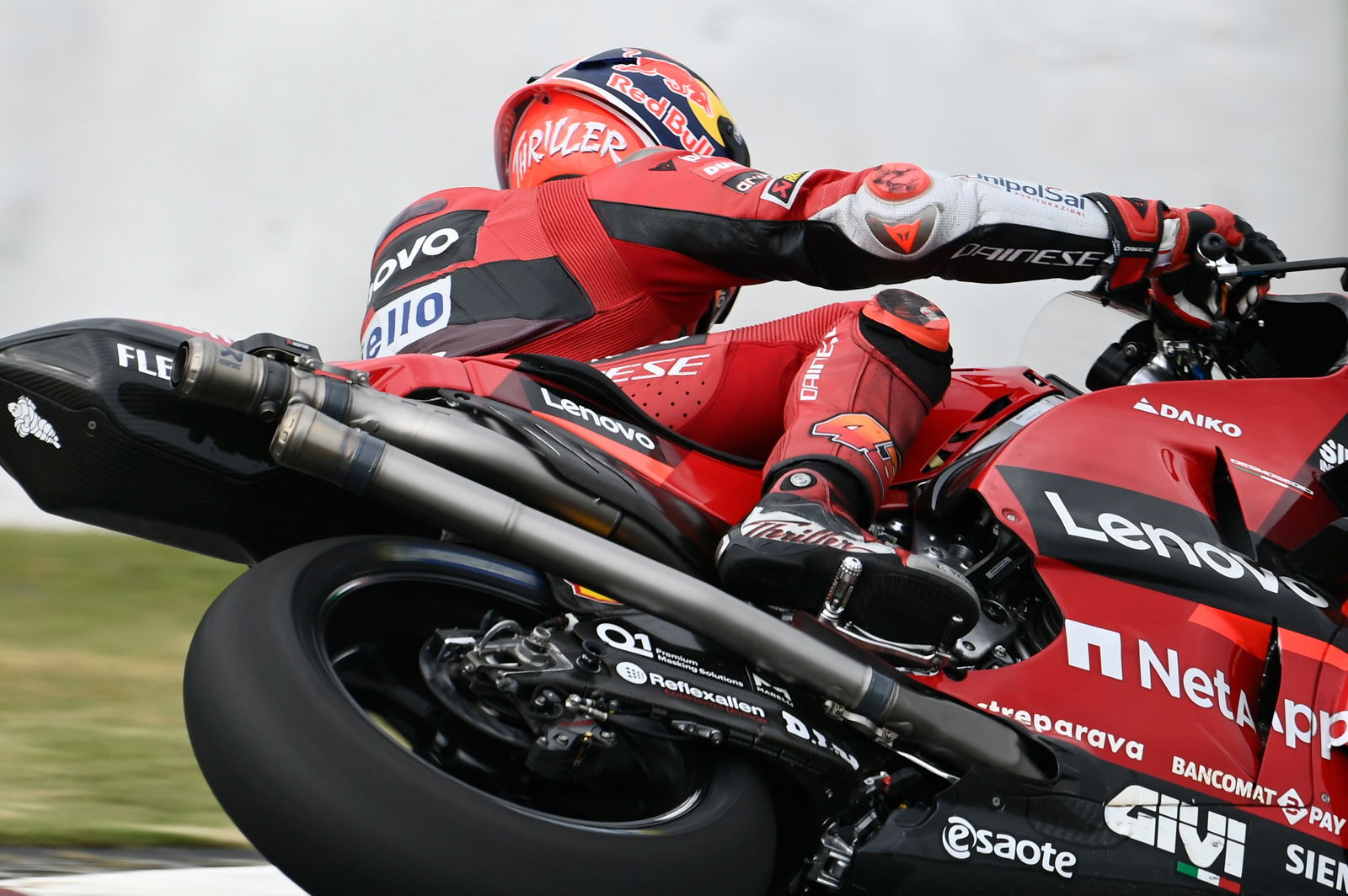'Only Suzuki, Yamaha don't have automatic MotoGP ride-height devices'

UPDATE: Hazrin has now found exactly what we were looking for; pictures of the same Ducati GP22, at the same corner, with and without the ride-height system activated. The pictures confirm that the front suspenion can now be compressed on corner exit.
Number crunching by motorcycle racing crew chief Chris Pike (below) shows Suzuki's Alex Rins set the highest average pace on Sunday's final day of the Sepang MotoGP test.
"We did a really good lap time, [but] the pace was incredible," confirmed Rins, fourth fastest for outright lap time. "If we took our ten fastest laps, pulling away the fastest one, I did '58.6-58.9 I think. These are really good lap times.
"So I think the bike compared to 2020 here improved a lot. We improved the engine, the ride height device."
Average lap info from day 2 at Sepang test. Wet lap times are not counted.
— Chris (@Chris_Pike__) February 6, 2022
Suzuki, Ducati and Aprilia all looking strong again today.
KTM and Yamaha still make up the bottom half of the speed chart.
Aprilia have taken a significant step, I expect to see them on the podium in '22 pic.twitter.com/f5lKPP10Cb
Suzuki was the last of the six MotoGP manufacturers to race with a rear ride-height device, after the summer break in Austria last year.
But the current system already looks to be two steps behind the class-leading Ducati version.
The next step is to make the rear GSX-RR ride-height device 'automatic'. That means it can be primed by the rider on the way into the corner, but then lowers by itself on the exit, instead of relying on the rider to activate it at the right moment when they are accelerating.
"We still need to work on the device because I think we are, maybe with Yamaha, the only manufacturers that engage by pushing the button [on the exit]," Rins confirmed.
"The others, before entry to the corner, they push a button and exiting from the corner the bike goes down automatically. So Suzuki still needs to work on this."
But even that development would leave Suzuki in the wake of Ducati which, having morphed its original holeshot device into a repeatable rear ride-height system, has now taken a further step ahead of he rest of the field with the front.
Ducati's front holeshot system (like those of its rivals) previously required riders to do a 'stoppie' on the grid and then manually lock the fork in a compressed position for the race start, but videos from Sepang showed both the front and back of test rider Michele Pirro's GP22 lowering at the push of a button.
Pirro was clearly taking his hand off the handlebar for the practice start, but the fact the front now lowers so effortlessly suggests it might also be able to do so at racing speeds, as described here by David Emmett of Motomatters.com.
Compressing the front as well as the rear on corner exit would further reduce wheelies (by lowering the centre of gravity) as well as creating a smaller frontal area, and therefore drag, on the straights.
The following pictures show the front suspension of a factory Ducati when 'uncompressed' in pit lane (but with the rider on board), when the rear ride-height device is being deployed on the exit of a corner and when 'compressed' for a practice start:
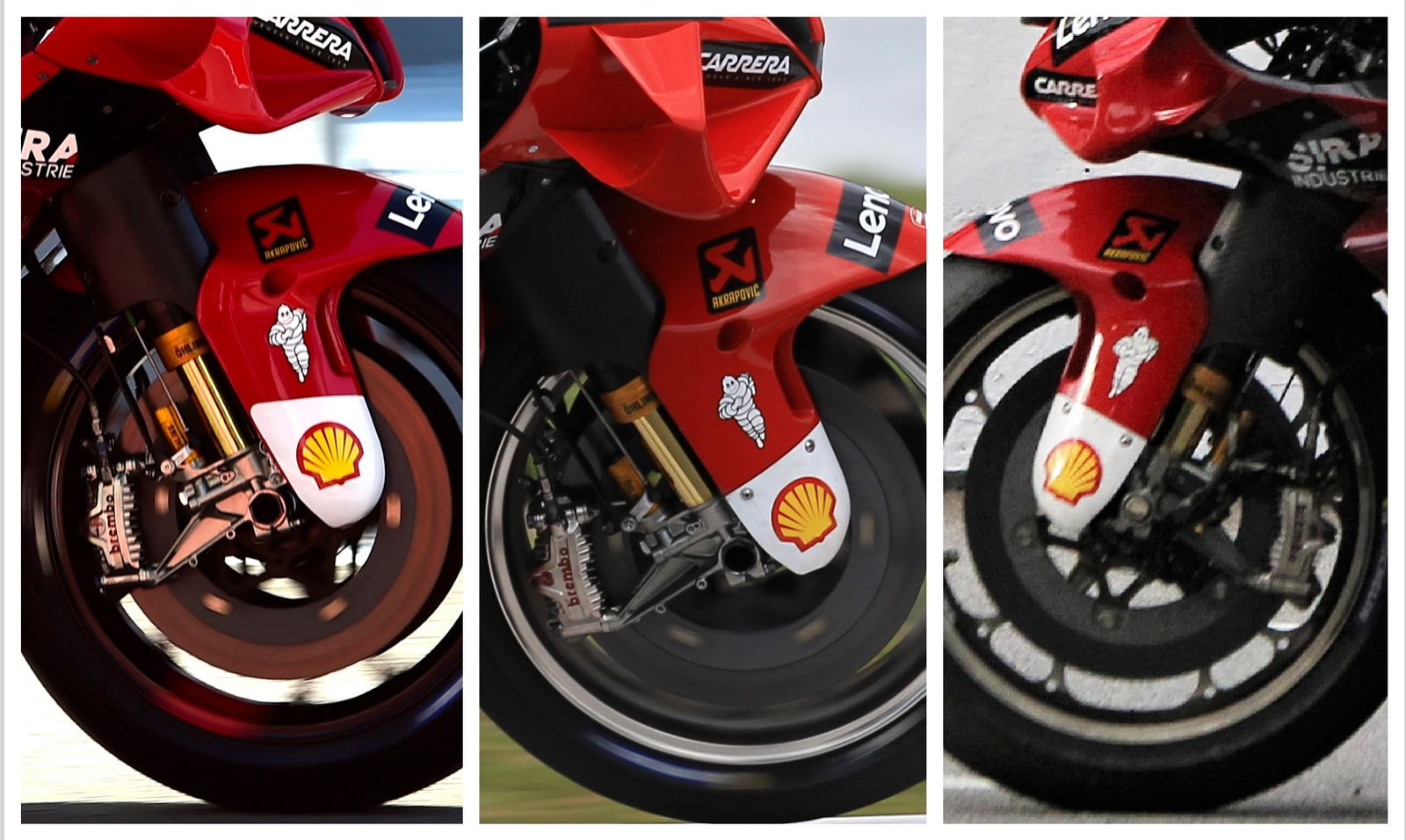
Left to right: Ducati front suspension in pit lane (Gold&Goose), 'at speed' during cornering when rear ride-height is activated (Hazrin CRIC), and during a practice start (Hazrin CRIC).
The difference in the length of the front suspension (gold) when the front holeshot device is deployed for a practice start is obvious, but comparing the 'standard' position in pit lane with the 'at speed' shots is more tricky, not least due to the bike being leaned.
Ducati's riders are banned from speaking in detail about the front system, Jack Miller joking that he didn't know anything about it. Pramac's Jorge Martin did confirm changes have been made and were working well: "I press the same button. Even in braking it’s the same. It’s important, also because we have some problems with other new parts" but was he referring just to practice starts?
"It's dificult to explain [in public] the ideas behind the parts, at least until we see exactly the same thing on other bikes," smiled Ducati Corse general manager Gigi Dall’Igna.
Either way, from the above images, if Ducati was lowering the front on corner exit, it looks to be by a very small amount compared to the compression for a practice start.
Or perhaps the front system had disengaged by that stage, when the front wheel begins 'floating'. If so, might the front be used more as a cornering device, to keep weight on the tyre through the middle of the turn, than anti-wheelie on the exit?
The pictures below show a range of bikes deploying their ride-height devices on corner exit at the Sepang test, starting with the full image of the Ducati:

Francesco Bagnaia with ride-height device deployed (pic: Hazrin CRIC).

Maverick Vinales (pic: Hazrin CRIC)
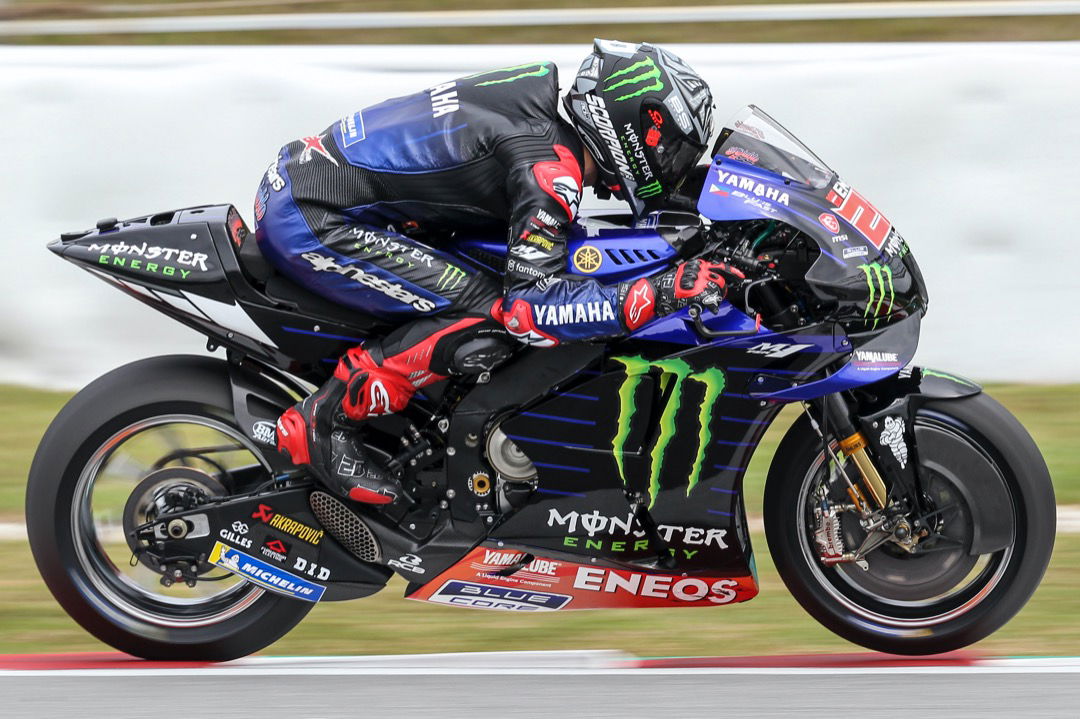
Fabio Quartararo (pic: Hazrin CRIC)
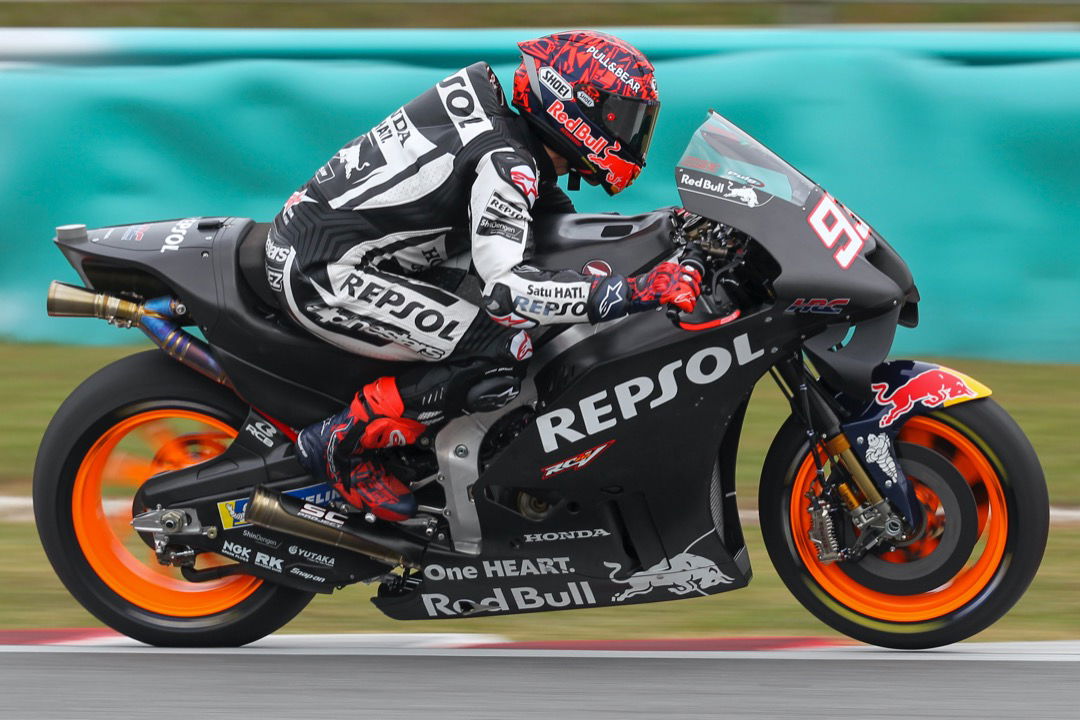
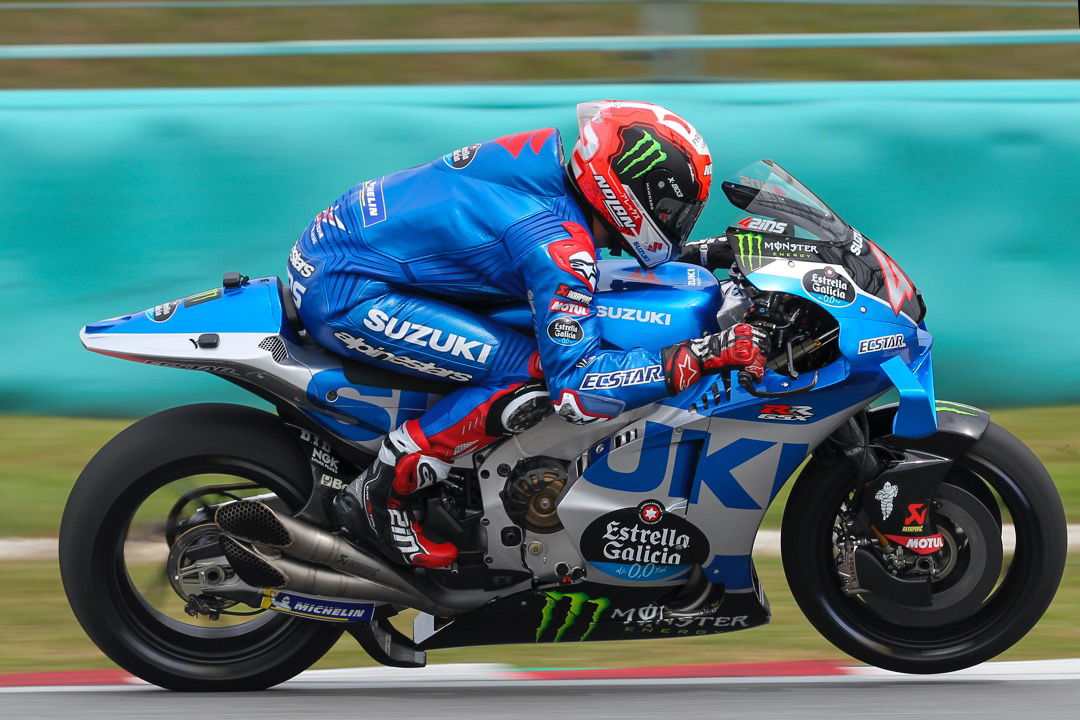
Alex Rins (pic: Hazrin CRIC)
While awaiting the next evolution of the Suzuki ride-height device, Rins' feels one of the few areas of weakness for the 2022 GSX-RR is the wings.
"I think the priority now is to improve the wings," he said. "The winglets that they brought were better on the brakes, but not on exit of the corners. So they need to keep working.
"We need to improve in the first part of exiting from slow corners in low gears, where we have our tyre in the air and the others are able to [keep the front wheel] on the floor. And with the tyre on the tarmac, their engine is still pushing.
"So we will go to Qatar with more-or-less the [same wings as used] in the last part of last year."
Despite his speed at Sepang, Rins is also wary of what the new Ducati GP22 will be capable of when up to full speed.
"I can say we improved but for example the Ducatis are not in a good lap time at this test but they are riding with a completely new bike," he said. "If you see Bastianini with last year's bike, he was super fast. So it's normal for them to go step-by-step [with the new bike].
"I think we feel ready for the first race in Qatar. Let's see how we are in Mandalika [this weekend]. Still there are a lot of things to work on and a lot to improve but we are in good shape."
Team-mate and former MotoGP champion Joan Mir was twelfth fastest at Sepang.
